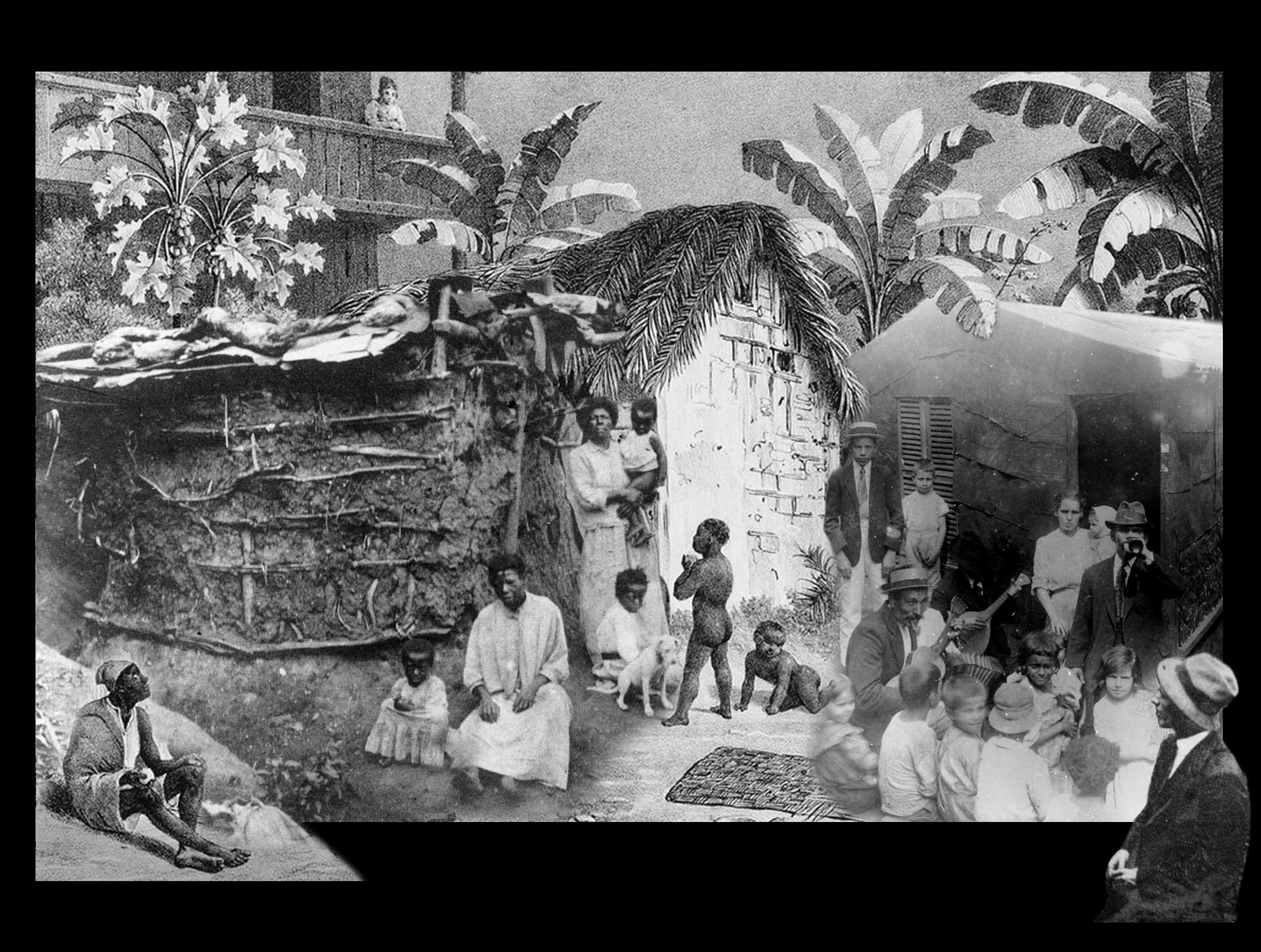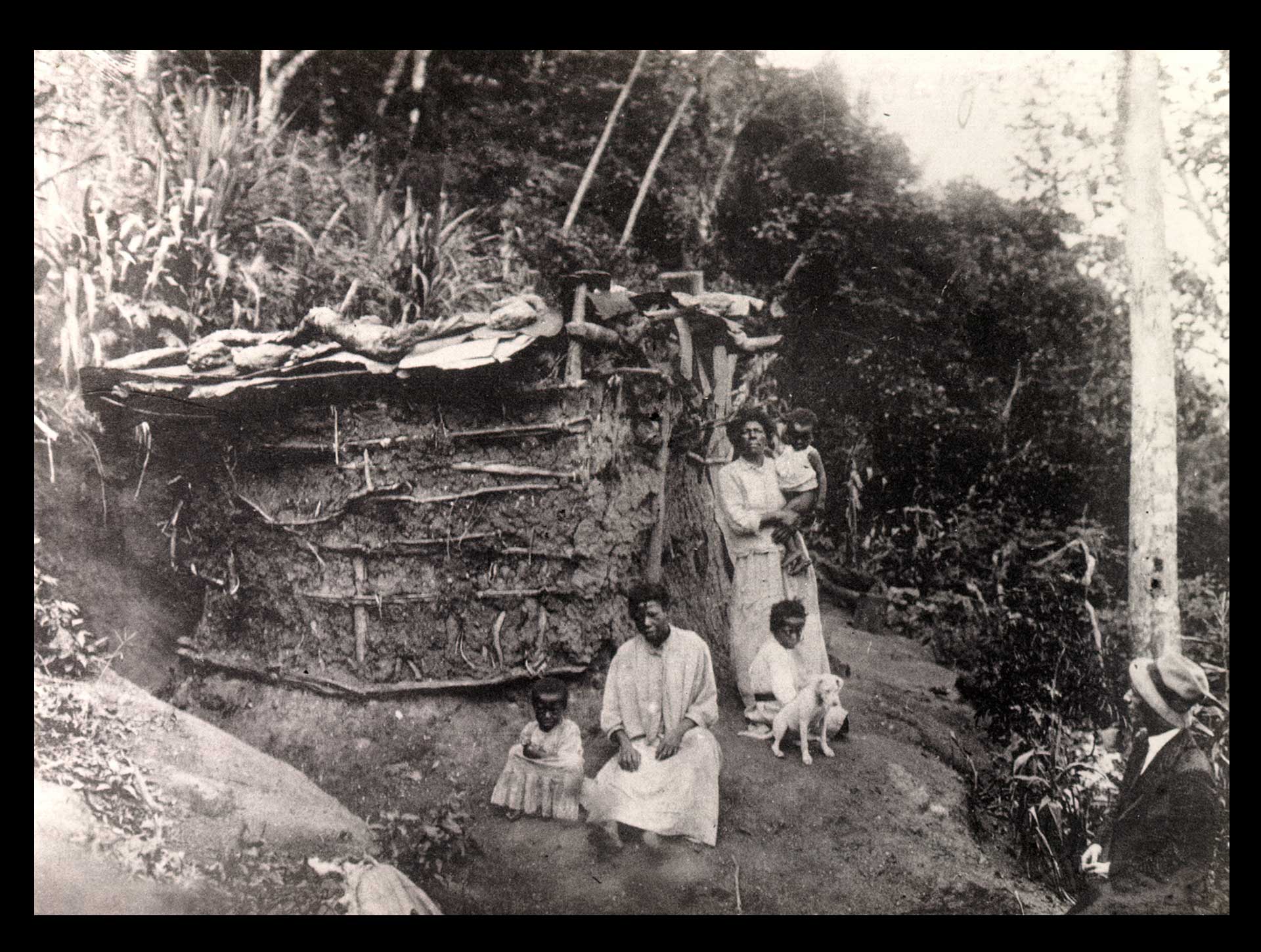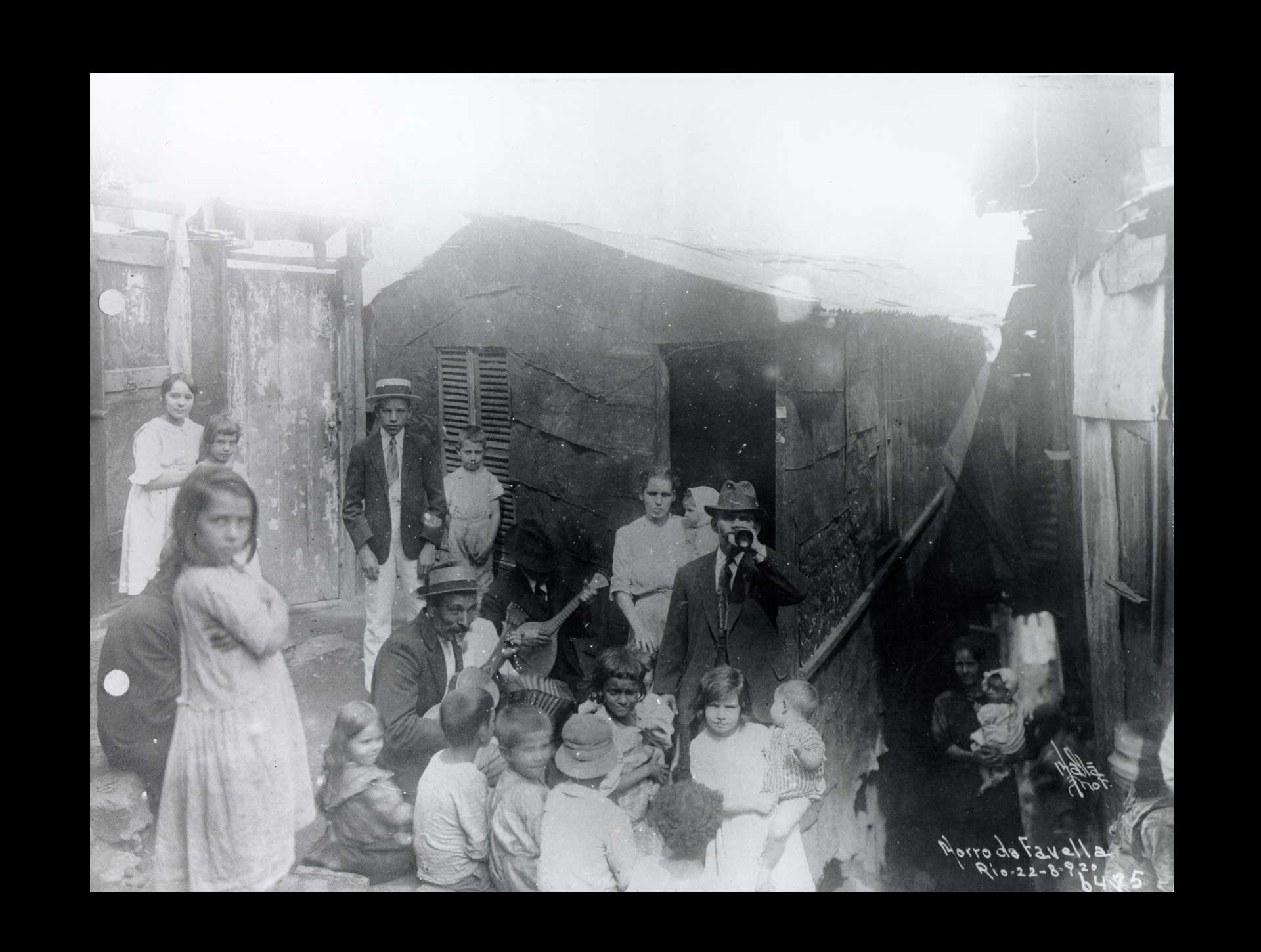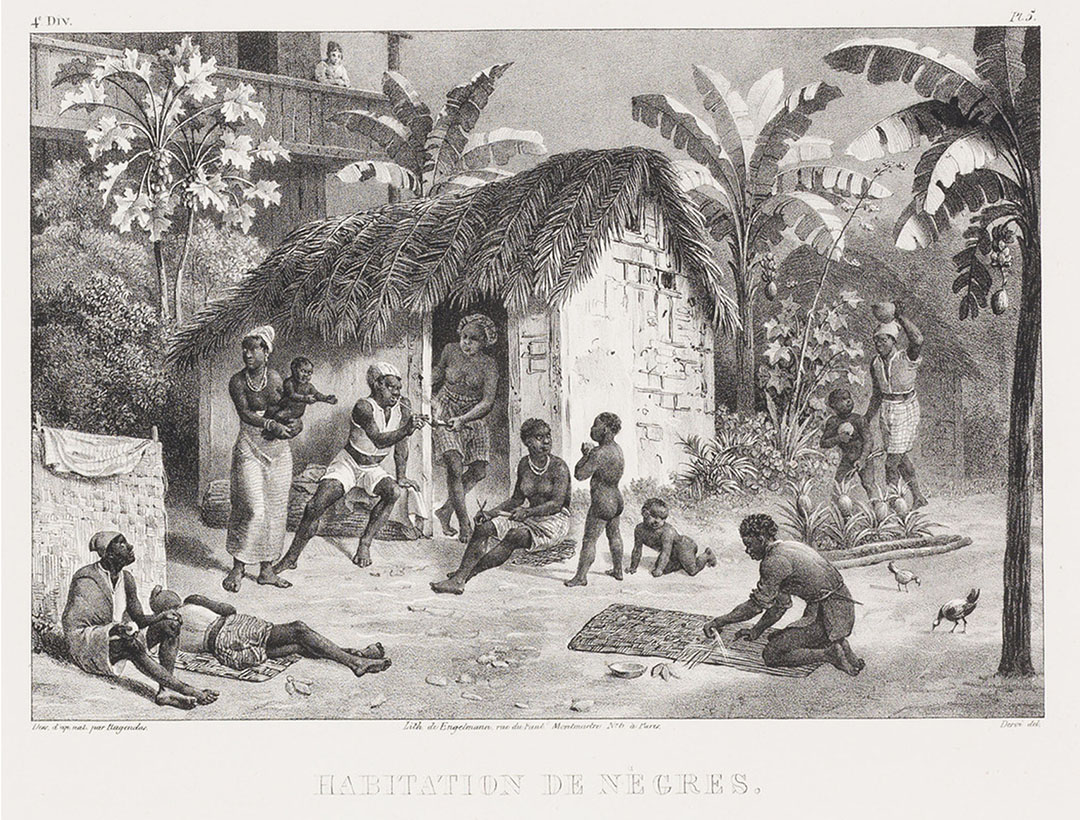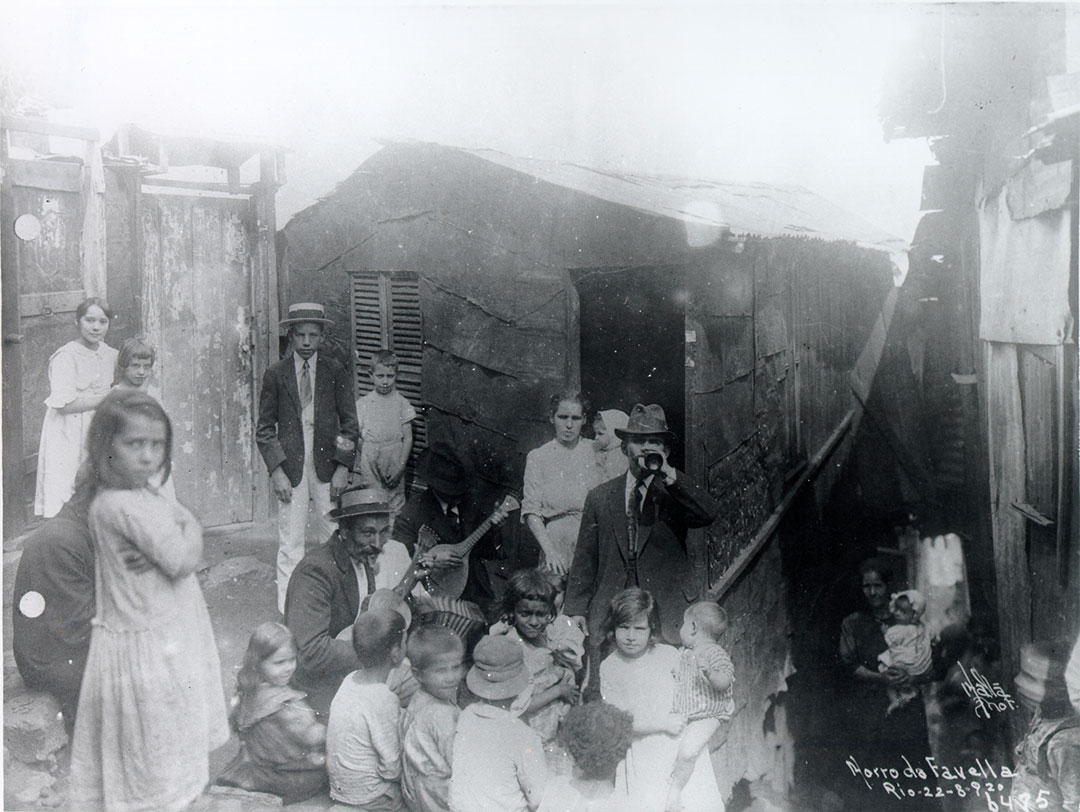PALIMPSESTS
Spaces
Referenced works
Johann Moritz Rugendas, “Habitation de Nègres” (c. 1827-35). Lithograph. Schomburg Center for Research in Black Culture, Photographs and Prints Division, The New York Public Library, New York, USA.
Anonymous photographer, Copacabana’s Babilonia favela (1912). Arquivo Geral da Cidade do Rio de Janeiro, Brasil.


